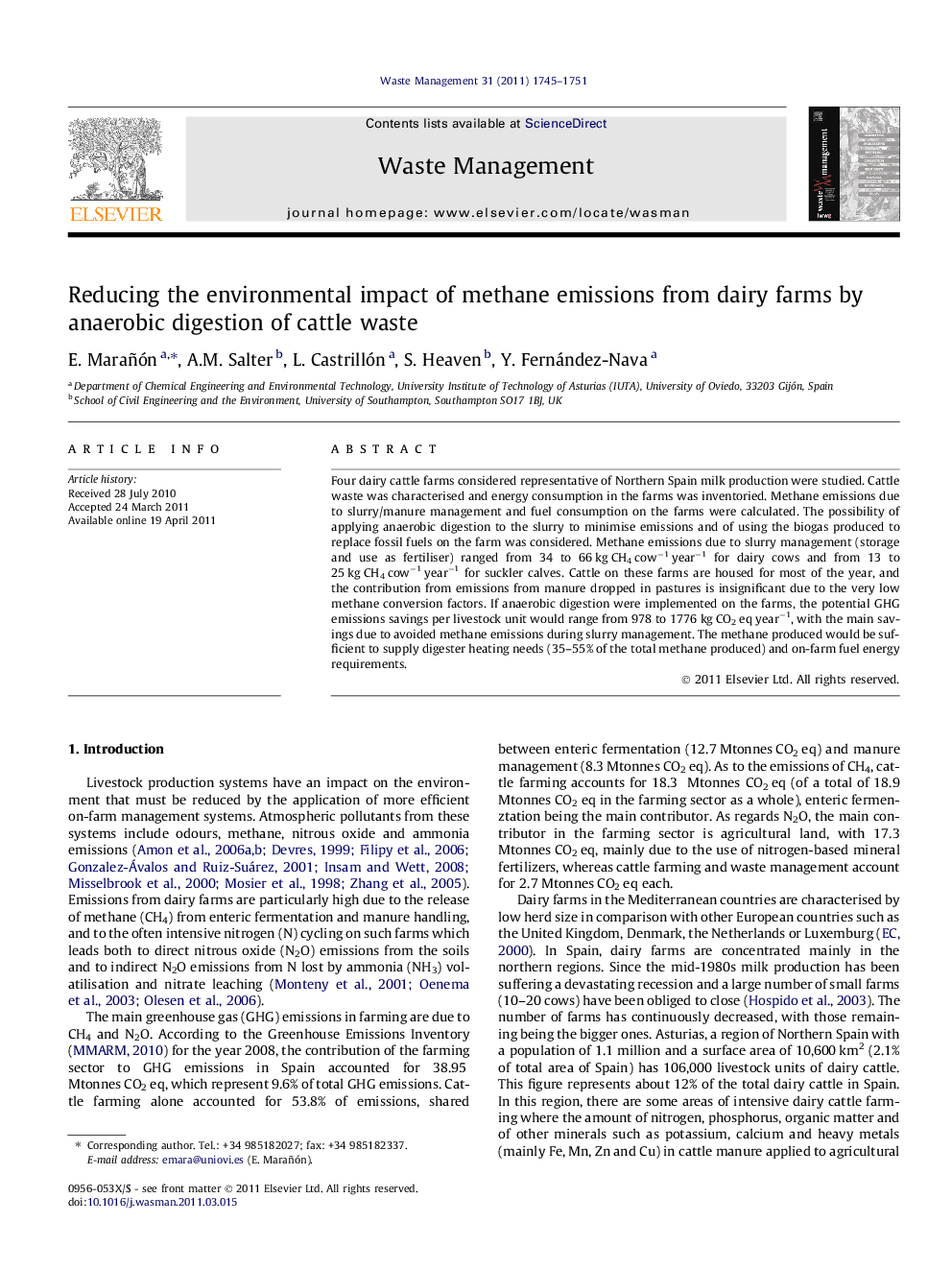| Article ID | Journal | Published Year | Pages | File Type |
|---|---|---|---|---|
| 4471892 | Waste Management | 2011 | 7 Pages |
Four dairy cattle farms considered representative of Northern Spain milk production were studied. Cattle waste was characterised and energy consumption in the farms was inventoried. Methane emissions due to slurry/manure management and fuel consumption on the farms were calculated. The possibility of applying anaerobic digestion to the slurry to minimise emissions and of using the biogas produced to replace fossil fuels on the farm was considered. Methane emissions due to slurry management (storage and use as fertiliser) ranged from 34 to 66 kg CH4 cow−1 year−1 for dairy cows and from 13 to 25 kg CH4 cow−1 year−1 for suckler calves. Cattle on these farms are housed for most of the year, and the contribution from emissions from manure dropped in pastures is insignificant due to the very low methane conversion factors. If anaerobic digestion were implemented on the farms, the potential GHG emissions savings per livestock unit would range from 978 to 1776 kg CO2 eq year−1, with the main savings due to avoided methane emissions during slurry management. The methane produced would be sufficient to supply digester heating needs (35–55% of the total methane produced) and on-farm fuel energy requirements.
► Methane emissions from slurry management are 34–66 kg CH4 dairy cow−1 year−1. ► GHG savings per livestock unit from slurry digestion are 978–1776 kg CO2 eq year−1. ► Methane production covers digester heating needs and some farm energy requirements.
